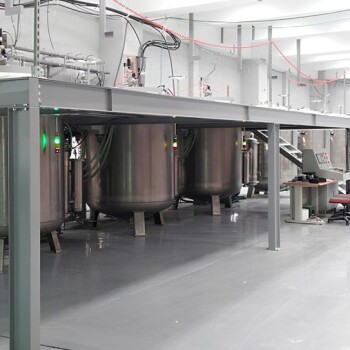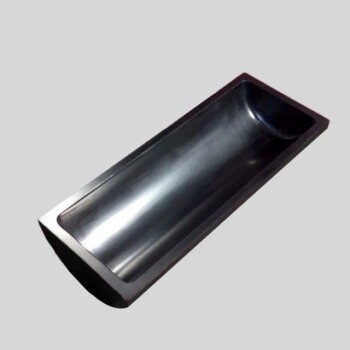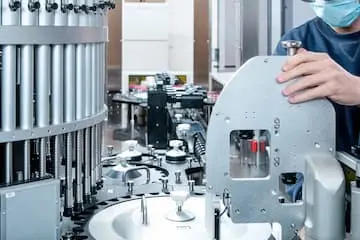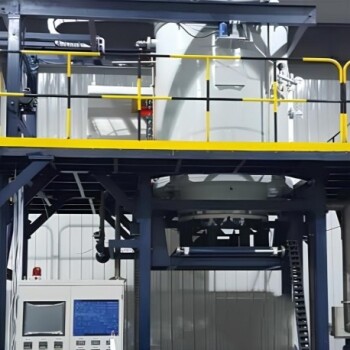Our graphitization furnaces are designed to convert carbonaceous materials into high-quality graphite products, essential for industries like metallurgy, electronics, and aerospace. We offer a variety of furnaces including Horizontal High Temperature Graphitization Furnace, Large Vertical Graphitization Furnace, and Continuous Graphitization Furnace, each tailored to specific needs and applications.
Toggle Categories
Get Instant Support
Choose your preferred way to connect with our team
-
Get Free Quote Fill out form for detailed pricing
-
Send Email Detailed inquiry support
-
WhatsApp Quick mobile chat
Response Time
Within 8 hours on working days, 24 hours on holidays
graphitization furnace

Horizontal High Temperature Graphite Vacuum Graphitization Furnace
Item Number : GF-01

Graphite Vacuum Furnace IGBT Experimental Graphitization Furnace
Item Number : GF-02

Graphite Vacuum Furnace High Thermal Conductivity Film Graphitization Furnace
Item Number : GF-03

Graphite Vacuum Furnace Negative Material Graphitization Furnace
Item Number : GF-04

Vertical High Temperature Graphite Vacuum Graphitization Furnace
Item Number : GF-05

Graphite Vacuum Continuous Graphitization Furnace
Item Number : GF-07

Large Vertical Graphite Vacuum Graphitization Furnace
Item Number : GF-08

Ultra-High Temperature Graphite Vacuum Graphitization Furnace
Item Number : GF-09

Carbon Graphite Boat -Laboratory Tube Furnace with Cover
Item Number : KM-D10
Comprehensive Introduction to Graphitization Furnaces
Graphitization furnaces are specialized equipment designed to transform carbonaceous materials into graphite through a high-temperature process. This conversion is crucial for producing graphite with unique properties such as high thermal conductivity, low thermal expansion, and chemical inertness. Our furnaces are engineered to meet the stringent requirements of industries including metallurgy, electronics, and aerospace, where high-quality graphite products are indispensable.
Key Features and Principles
Our graphitization furnaces operate by subjecting carbonaceous materials to temperatures typically ranging from 2500 to 3000 degrees Celsius in an inert atmosphere. This process ensures the conversion of these materials into graphite, which is essential for applications requiring high thermal conductivity and resistance to extreme conditions. The furnaces are designed with precision to maintain uniform heating, ensuring the quality and consistency of the end products.
Advantages of Our Graphitization Furnaces
- High Temperature Resistance: Our furnaces are capable of reaching and maintaining temperatures up to 3100°C, ensuring the effective graphitization of various carbon materials.
- Uniform Heating: Designed with advanced heating elements and control systems, our furnaces provide uniform heating, crucial for achieving consistent graphite properties.
- Versatility: We offer a range of furnaces including horizontal, vertical, and continuous models, each tailored to specific applications and production needs.
- Customization: Recognizing the diverse requirements of our clients, we provide customizable solutions to ensure our furnaces meet specific industry standards and operational needs.
Applications and Industries
Our graphitization furnaces are integral to the production of high-quality graphite products used in a variety of applications:
- Metallurgy: For the production of electrodes and crucibles.
- Electronics: Essential for components requiring high thermal conductivity.
- Aerospace: Used in structural components that must withstand extreme conditions.
Why Choose Us?
Our commitment to quality and innovation sets us apart. We offer not just products, but solutions tailored to your specific needs. Our team of experts is dedicated to providing comprehensive support, from initial consultation to post-sale service. We understand the critical role our furnaces play in your operations and are committed to ensuring they perform flawlessly.
For more information or to discuss your specific requirements, please contact us. We look forward to helping you achieve your goals with our advanced graphitization furnaces.
FAQ
What Is A Graphitization Furnace?
What Are The Main Applications Of Graphitization Furnaces?
What Are The Different Types Of Graphitization Furnaces?
How Does A Graphitization Furnace Work?
What Are The Advantages Of Using A Graphitization Furnace?
REQUEST A QUOTE
Our professional team will reply to you within one business day. Please feel free to contact us!
Related Articles

The Architecture of Heat: Aligning Engineering Precision with Laboratory Reality
Choosing a tube furnace is not about finding the "best" model, but matching specifications—temperature, zones, and atmosphere—to your scientific reality.

The Symphony of Silence: Molybdenum and the Architecture of the Vacuum Hot Zone
Why do we trust Molybdenum in the most extreme environments? Explore the engineering logic behind all-metal hot zones and the pursuit of absolute purity.

Why Your High-Temperature Processes Fail: The Hidden Enemy in Your Vacuum Furnace
Frustrated by inconsistent vacuum furnace results? Discover the real cause of failures and how to fix it by ensuring true vacuum integrity.

The Geometry of Heat: Why the Split Tube Furnace is an Engineer’s Best Ally
When standard tunnels fail complex geometries, the split tube furnace offers a solution. Discover how hinged designs enable advanced R&D and safer thermal processing.

Inconsistent Melts? The Problem Isn't Your Furnace, It's the Physics.
Struggling with inconsistent alloy quality and high costs? Discover the hidden reason and learn how to choose the right furnace for perfect results.

The Art of Nothingness: Vacuum, Inert Gas, and the Pursuit of Purity
Vacuum vs. inert gas furnaces: Understand the trade-offs between absolute purity and cost-effective protection in laboratory heat treatment.

Why Your High-Temperature Furnace Failed—And How to Prevent It From Happening Again
Discover the hidden reason behind premature furnace failure. It's not poor quality, but a critical chemistry mismatch. Learn how to choose the right furnace.

The Silent Partner in Pyrolysis: Engineering the Perfect Thermal Boundary
Choosing a tube furnace material is a study in trade-offs. We explore the engineering physics behind Alumina, Quartz, and Alloys to ensure process integrity.

Why Your High-Temperature Furnace Fails—And How to Choose the Right One
Is your high-temp furnace causing delays and costly repairs? Learn why focusing on workflow, not just temperature, is the key to choosing the right one.

The Inverted Cup: When Physics Hides a Lethal Trap in Vacuum Furnaces
Hot argon behaves counter-intuitively in bottom-loading furnaces. Discover the physics of the "inverted cup" effect and how to prevent silent asphyxiation.

Muffle vs. Tube Furnace: How the Right Choice Prevents Catastrophic Lab Failure
Choosing the wrong lab furnace can ruin weeks of research. This guide clarifies the critical differences between muffle and tube furnaces to ensure your success.

The Geometry of Control: Why the Tube Furnace is Science’s Precision Tool
Tube furnaces offer unmatched thermal uniformity and atmospheric control. Discover the engineering logic behind these precision instruments.

The Architecture of Consistency: Why Geometry Matters in Thermal Processing
Heat is easy to generate, but difficult to tame. Discover how the geometry of a tube furnace ensures the uniformity required for modern material science.

Your Induction Furnace Is Failing You. The Reason Isn't What You Think.
Struggling with inconsistent melts or high costs? The problem may be a fundamental mismatch in your induction furnace type. Learn to fix it.

The Architecture of Control: Why Thermal Stability Defines Electrolysis Success
Discover how double-layer water-bath electrolytic cells eliminate thermal variables, ensuring accuracy and reproducibility in electrochemical research.

The Geometry of Control: Why the Tube Furnace Remains Indispensable
Precision heat treatment meets atmospheric control. Discover how tube furnaces master sintering, annealing, and CVD by eliminating variables.

The Breakthrough in a Box: How Vacuum Tube Furnaces Eliminate Contamination in Materials Research
Frustrated by oxidation ruining your high-temperature experiments? Discover how the vacuum tube furnace creates a perfect, contamination-free environment, enabling breakthroughs.

Furnace Contamination: The Hidden Saboteur Ruining Your High-Value Parts
Discover why your heat-treating process fails on high-value parts. The issue isn't your settings—it's hidden furnace contamination. Learn the fix.

Why Your High-Temperature Furnace Elements Keep Failing (And How to Stop It)
Discover the hidden causes of MoSi2 heating element failure, like pesting and chemical attack, and learn how to achieve reliable, repeatable results.

From Crack to Complete: A Scientist's Guide to Eliminating Catastrophic Tube Furnace Failures
Prevent costly tube furnace bursts. Learn the key causes like thermal shock and material incompatibility, and discover the right strategy to ensure safety and data integrity.

